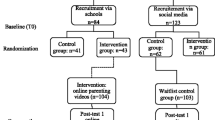Abstract
China has officially entered the era of negative population growth since 2022. In line with the general trend of reduced birth intentions among contemporary Chinese youth, the popularity of watching online baby videos has been increasing. This paper examines the underlying mechanisms of how online baby videos influence the fertility expectations of Chinese childless youth. Both quantitative regression analysis and qualitative thematic analysis were conducted based on a questionnaire survey (n = 528) and in-depth interviews (n = 15). The results show that: (a) individuals are attracted to online baby videos due to factors such as the algorithmic recommendation mechanism of the platform, interesting video content, and the alignment with the followers’ psychology; (b) continuous engagement with online baby videos is likely to boost the fertility expectations of childless youth in two ways: by increasing their willingness to have children and reinforcing their inherent desires for parenthood; (c) the combination of emotional and rational appeals in online baby videos improves fertility expectations. The emotional appeal refers to the online baby videos that depict the emotional value of children in relation to self-growth, emotional companionship, and spiritual comfort. The rational appeal, on the other hand, refers to the online baby videos that present positive role models and decision-making bases to enhance the parenting self-efficacy of childless youth; (d) the increase in fertility willingness through watching baby videos is a subtle and gradual process, rather than an instantaneous transformation. This research not only theoretically explores the extension of dimensions of children’s emotional value but also contributes to understanding the potential role of online baby video clips in practical efforts to enhance young people’s fertility expectations.



Similar content being viewed by others
Data availability
The authors are prepared to supply the relevant data in response to reasonable requests.
Code availability
Some or all of the code generated or used during the study is available from the corresponding author upon request.
Notes
ABI is the name of an Internet celebrity boy on China’s Bilibili platform.
XIAOMAI is the name of an Internet celebrity girl on China’s Bilibili platform.
References
Ajzen, I., and J. Klobas.. “Fertility Intentions: An Approach Based on the Theory of Planned Behavior.” Demographic Research 29 (2013): 203–232.
Arnold, F. The Value of Children: A Cross-National Study, Volume One. Introduction and Comparative Analysis, vol. 1. Oxford: Oxford University Press, 1975.
Braun, V., and V. Clarke. “Using Thematic Analysis in Psychology.” Qualitative Research in Psychology 3, no. 2 (2006): 77–101.
Cai, L.Y., and J.H. Zhang. “‘The Medium Cultivates the Audience’ and ‘The Audience Cultivates the Medium’”: Reconstruction of the Network Cultivation Model in the Big Data Environment.” Publishing Wide 06 (2015): 88–91.
Ellison, N.B., C. Steinfield, and C. Lampe. “The Benefits of Facebook ‘Friends’: Social Capital and College Students’ Use of Online Social Network Sites.” Journal of Computer-Mediated Communication 12, no. 4 (2007): 1143–68.
Fred, L., C.L. Brett, and W.L. Kyle. Organizational Behavior: An Evidence-Based Approach, 14th ed. Charlotte: Information Age Publishing, 2021.
Gerbner, G., and L. Gross. “Living with Television: The Violence Profile.” Journal of Communication 26 (1976): 172–99.
Gu, X. “Introduction: The Value of Children and Social Transformations in Asia.” Child Indicators Research 14 (2021): 477–86.
Heiland, F., A. Prskawetz, and W.C. Sanderson. “Are Individuals’ Desired Family Sizes Stable? Evidence from West German Panel Data.” European Journal of Population 24, no. 2 (2008): 129–56.
Hoffman, L.W. A Psychological Perspective on the Value of Children to Parents: Concepts and Measures. The Satisfaction and Costs of Children: Theories, Concepts and Methods. Honolulu: East-West Centre Population Institute, 1972.
Hoffman, L.W., A. Thornton, and J.D. Manis. “The Value of Children to Parents in the United States.” Journal of Population 1 (1978): 91–131.
Hornik, R., and E. McAnany. “Theories and Evidence: Mass Media Effects and Fertility Change.” Communication Theory 11, no. 4 (2001): 454–71.
Kashiwagi, K., and H. Nagahisa. “Value of a Child for Women: Why Have a Child Now?” Japanese Journal of Educational Psychology 47, no. 2 (1999): 170–9.
Kim, U., Y.S. Park, Y.E. Kwon, and J. Koo. “Values of Children, Parent–Child Relationship, and Social Change in Korea: Indigenous, Cultural, and Psychological Analysis.” Applied Psychology 54, no. 3 (2005): 338–54.
Knobloch-Westerwick, S., L.E. Willis, and A.R. Kennard. “Media Impacts on Women’s Fertility Desires: A Prolonged Exposure Experiment.” Journal of Health Communication 21, no. 6 (2016): 647–57.
Li, S., and F.P. Li. “Traditional Gender Concepts, Information Dissemination and Women’s Fertility Intentions: A Questionnaire Survey Study Based on Women of Childbearing Age.” Journal of Southwest University for Nationalities (Humanities and Social Sciences Edition) 12 (2021): 146–52.
Li, T., Y.X. Zheng, and Y.T. Yan. “Has Marriage and Childbearing Been Deinstitutionalized in China?—A Discussion Based on a Survey of Chinese University Students’ Views on Marriage and Childbearing in 2021.” Social Science Digest 08 (2022): 103–5.
Liu, J. “Childhood in Urban China: A Three-Generation Portrait.” Current Sociology 70, no. 4 (2022): 598–617.
Liu, J., and T.T. Song. “‘Rendered Anxiety’: Social Media Use and Women’s Perceived Fertility Risk.” Media Watch 06 (2022): 79–86.
Liu, X. 2017. “A Study on the Development of Fertility Values Questionnaire and Its Application” [Unpublished master diss., China University of Geosciences).
Luppi, F., and L. Mencarini. “Parents’ Subjective Well-Being After Their First Child and Declining Fertility Expectations.” Demographic Research 39 (2018): 285–314.
Miller, W.B., and D.J. Pasta. “Behavioral intentions: Which Ones Predict Fertility Behavior in Married Couples?” Journal of Applied Social Psychology 25, no. 6 (1995): 530–55.
National Bureau of Statistics (Ed.). Statistical Bulletin of PRC on National Economic and Social Development in 2022. National Bureau of Statistics, 2023. http://www.stats.gov.cn/sj/zxfb/202302/t20230228_1919011.html.
National Health Commission (Ed.). Statistical Bulletin on the Development of Health Care in China in 2021. Planning, Development and Informatization Division, 2022. http://www.nhc.gov.cn/guihuaxxs/s3586s/202207/51b55216c2154332a660157abf28b09d.shtml.
Peng, S.Y. A Study on the Influence of Online Mother-Baby Videos on the Fertility Concept of Young Women [Unpublished Master diss., Heilongjiang University, 2022).
Richard I. Evans. Albert Bandura: The Man and His Ideas—A Dialogue. New York: Praeger, 1989.
Shek, D.T. “Hong Kong Parents’ Attitudes About Marital Quality and Children.” The Journal of Genetic Psychology 157, no. 2 (1996): 125–135.
Song, J.E., J.A. Ahn, S.K. Lee, and E.H. Roh. “Factors Related to Low Birth Rate Among Married Women in Korea.” PLoS ONE 13, no. 3 (2018): e0194597.
Tianfu Morning Post. “Online Parenting” becomes popular: falling in love with others’ adorable children, all sorts of worries. Tianfu Morning Post, 2017. https://www.sohu.com/a/161875344_99940851
Wen, F.M., and X.F. Xie. “Operation Logic and Ethical Concerns of Short Video Recommendation Algorithms: An Actor Network Theory Perspective.” Journal of Southwest University for Nationalities (Humanities and Social Sciences Edition) 02 (2022): 160–9.
Yang, Q. “A Study of Fertility Concepts of Chinese Youth of Childbearing Age: Interpretive Paradigm and Modernity Change.” Journal of China Youth Institute of Politics 02 (2010): 130–4.
Zelizer, V.A. Pricing the Priceless Child: The Changing Social Value of Children. Princeton: Princeton University Press, 1994.
Zhang, Z.A., and S.X. Gong. “China’s Top 10 Hot Spots for Youth Development.” Youth Exploration 06 (2022): 17–30.
Funding
Supported by the National Social Science Foundation Project ‘Research on Modernization Pathways for Network Public Opinion Governance from the Perspective of Group Ecology’ (Project Number: 23BXW041). Supported by the Fundamental Research Funds for the Central Universities.
Author information
Authors and Affiliations
Contributions
ZM Contributed to the conception of the study; assisted in performing the analysis with constructive discussions. ZX Conducted the experiment; significantly contributed to the analysis and manuscript preparation; performed the data analyses and wrote the manuscript.
Corresponding author
Ethics declarations
Conflict of interest
The authors declare no potential conflicts of interest with respect to the research, authorship, and/or publication of this article.
Ethical statements
Written informed consent was obtained from all participants prior to the enrollment (or for the publication) of this study (or case report).
Rights and permissions
Springer Nature or its licensor (e.g. a society or other partner) holds exclusive rights to this article under a publishing agreement with the author(s) or other rightsholder(s); author self-archiving of the accepted manuscript version of this article is solely governed by the terms of such publishing agreement and applicable law.
About this article
Cite this article
Zhou, M., Zhao, X. In the era of declining population: the impact of online baby video clips on the fertility expectations of Chinese childless youth. Int. Commun. Chin. Cult (2024). https://doi.org/10.1007/s40636-024-00288-w
Received:
Revised:
Accepted:
Published:
DOI: https://doi.org/10.1007/s40636-024-00288-w




